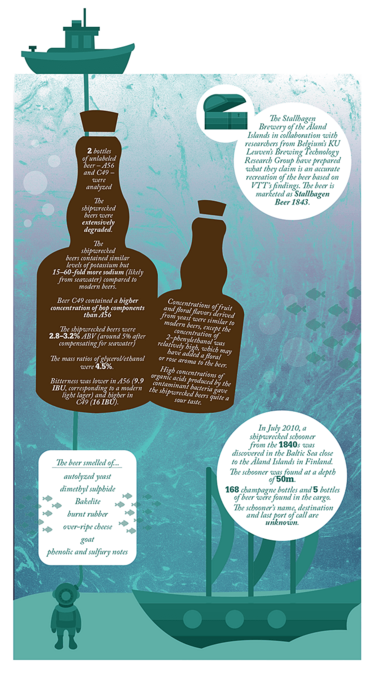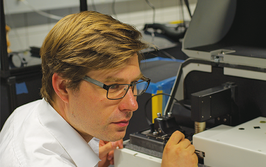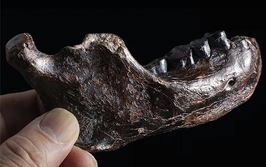Beer Ahoy!
When bottles of beer from the 1840s were found on a shipwreck, there was only one thought on the minds of analytical scientists: what chemicals do they contain?
Scientists from the Technical Research Centre of Finland (VTT) and the Technical University of Munich have analyzed two bottles of beer found in the cargo of a shipwrecked schooner, which is estimated to have sunk in the Baltic Sea in the 1840s.
“In many ways, the beers were similar to modern beers,” says Brian Gibson, a senior scientist at VTT and one of the study leaders. “They clearly contained malted grain and hops and were fermented with Saccharomyces yeast. They appeared quite clear suggesting some form of filtration, and the presence of iso-α-acids indicated that they had been boiled prior to fermentation, as is the case with all modern beers.”
Gibson and his colleagues performed a number of analyses on the beers using a variety of chromatography and spectrometry techniques (1). No live yeast cells were found in the bottles, but they did find live, mainly lactic acid bacteria, which are typical beer contaminants. “These bacteria had apparently survived for 170 years without any additional source of nutrition. These long-lived strains are currently being studied at VTT and we hope to learn more about their biology and in particular to understand how they survived for such a long time. This information will hopefully help us to more effectively control brewery contamination levels in the future,” says Gibson.
Find out more in our infographic.

- J. Londesborough et al., “Analysis of Beers from an 1840s’ Shipwreck,” J. Agric. Food Chem., 63 (9), 2525–2536 (2015).
"Making great scientific magazines isn’t just about delivering knowledge and high quality content; it’s also about packaging these in the right words to ensure that someone is truly inspired by a topic. My passion is ensuring that our authors’ expertise is presented as a seamless and enjoyable reading experience, whether in print, in digital or on social media. I’ve spent seven years writing and editing features for scientific and manufacturing publications, and in making this content engaging and accessible without sacrificing its scientific integrity. There is nothing better than a magazine with great content that feels great to read."

















